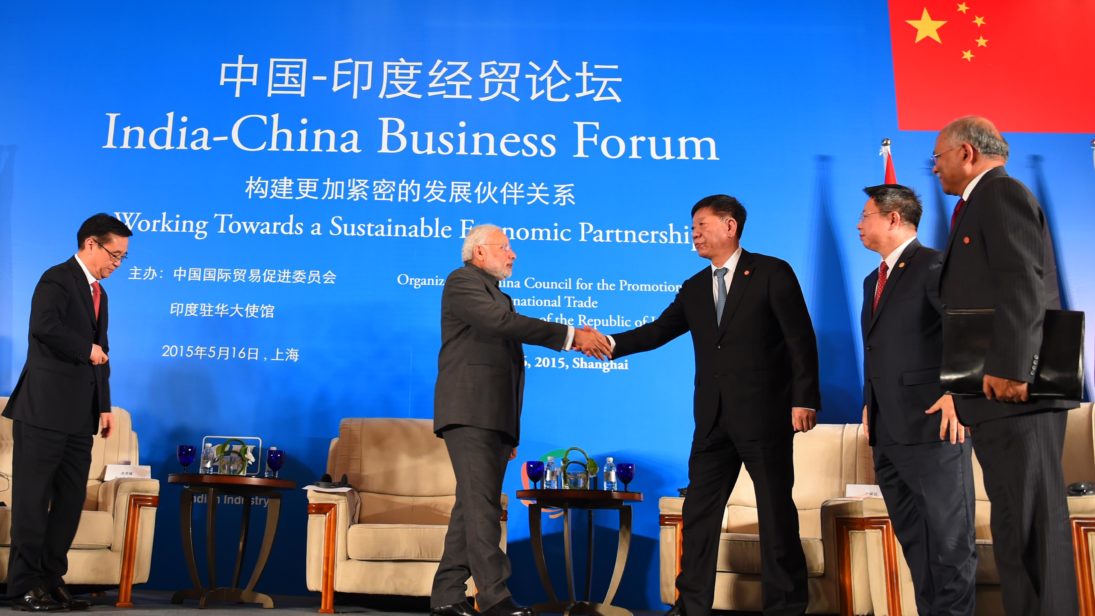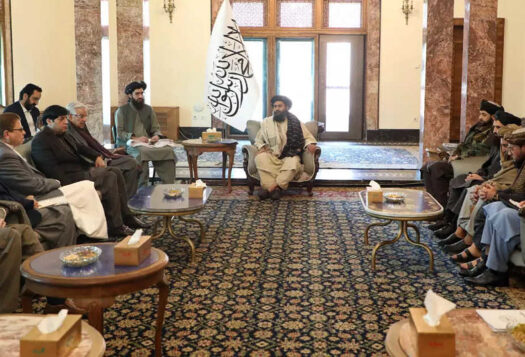
Historically, the India-China relationship has been an uncordial one. However, as the two Asian Giants have begun to share capitalist views, the nature of the relationship has shifted as the two countries increasingly share economic interests. Recent high profile visits by Chinese President Xi Jinping to India and Indian Prime Minister Narendra Modi to China are perceived as a new commitment to strengthening the relationship. Mr. Modi flew to Xian – some 1,000km (600 miles) from Beijing – on his first visit to China since he assumed office as Prime Minister. Mr. Xi travelled from Beijing to Xian to welcome the Indian Prime Minister in the first instance that a foreign dignitary was welcomed by the Chinese premier outside of Beijing. The visits were a success, with 24 agreements signed, including cooperation on defense, the economy, and infrastructure development.
In spite of a persistent territorial dispute between India and China, Prime Minister Modi was warmly welcomed by the Chinese. He is not a new comer to creating economic growth in India via cooperation with Beijing; he paid four visits to China when he was the Chief Minister of Gujarat from 2001 to 2014. He also implemented a series of reforms that dramatically improved the state’s growth rate. He has had previous success creating economic ties with China – thus welcoming Modi cordially was an indication of confidence in his ability to do so again.
The territorial dispute between India and China has long hindered efforts to improve relations. However, Modi, instead of taking the issue to a boiling point, tackled the issue diplomatically and with a genial tone. During the discussions, he said that resolving the territorial issues would require a more generous response from Beijing and that Beijing should revisit its decades-long stance. Despite this, both sides agreed to not let territorial disputes get in the way of the visit.
India and China’s willingness to put aside territorial disputes is not entirely surprising since the two neighbors face converging challenges such as terrorism, climate change, and growing populations. Around one third of the world’s population lives in China and India, thus making human capital cheap and available on either side of the border. Additionally, both countries want to play a more active role in the international arena. This objective, however, requires better domestic infrastructure and the resolution of territorial disputes with neighbors. China seems to be doing well in these areas, but India faces grim internal challenges accompanied by tensions with its old rival Pakistan (Kashmir, water, Siachin, etc.) and with China (territorial) too. Finally, both countries want to increase people to people contact and pursue closer military-military interaction. Modi also addressed Chinese reservations over increasing India-U.S. ties, as he offered assurances that this relationship is not aimed against China.
The area where both countries’ objectives overlap the most is the economy. Modi has introduced ‘Act East’ and ’Make in India’ policies, with the aspiration of both bringing Chinese investment home and doubling India’s export volume. Currently, China is India’s sixth largest trading partner – a position that is expected to continue for some time – while India has become China’s sixth largest market place and is growing fast. India worries, however, about the increasing trade deficit. Delhi aims to reduce it through substantial Chinese investment and home grown industrial products. In order to increase Chinese investment, India will need to address issues like bureaucratic red tape, corruption, vague tax rules, and basic infrastructure deficiencies. India could learn from China, as China has successfully overcome many of these issues. To help overcome infrastructure deficiencies, Modi has sought greater Chinese investment to help upgrade roads, railway links, and airways. He is also seeking Chinese investment to address India’s energy crisis. The Indian desire to get Iranian natural gas is limited by U.S. pressure, while TAPI (Turkmenistan-Afghanistan-Pakistan-India) pipeline project also seems less tangible for India. Modi’s trip has earned substantial investment from the Chinese and it is expected that a major amount of investment will be made in power sector. Chinese assistance in areas like power generation, telecommunications, and railways would benefit India as well, and could be accomplished through long-term financing by Chinese banks, which would not pressure India.
India may well get Chinese investment as Beijing has no single economic model. For every region, China applies different models and approaches. Investing in Africa and Latin America requires an abundance of time, resources and capital. Because of India’s proximity and fast growing economy, it may be a more attractive option.
Despite converging economic interests, cooperation between China and India in the economic arena isn’t guaranteed. India has reservations about Chinese activities in the Indian Ocean and in Southeast Asia. China’s ‘String of Pearls’ is a serious source of anxiety for India. Enhanced Chinese military maneuverings also contribute to a trust deficit between the two. Economic likenesses can be blemished by security fragmentation. These security concerns could trump India’s economic interests.
Despite converging regional interests, the question remains whether China will assist India economically if the territorial issues remain unresolved. Can India put aside its concerns over the China-Pakistan Economic Corridor (CPEC)? China’s fast-tracking of the Bangladesh- China-India-Myanmar (BCIM) corridor could assuage India’s concerns over CPEC. If India and China can overcome political tensions and increase Chinese investment, Modi’s ‘Act East’ and ‘Make in India’ policy would transform India’s economic trajectory.
***


